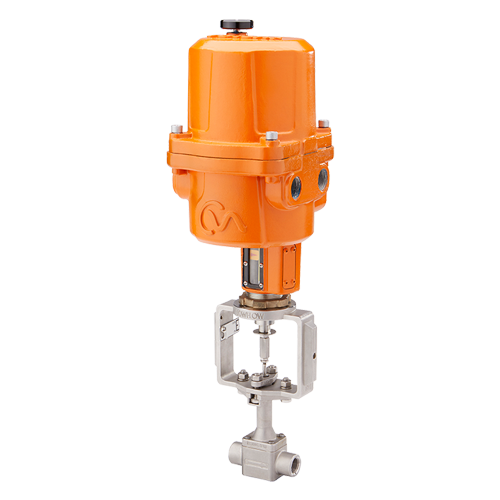The Role of Control Valves in Fluid Circulation Administration Systems
The Role of Control Valves in Fluid Circulation Administration Systems
Blog Article
Enhance Efficiency With Top-Quality Structure Automation Controls Consisting Of Controllers
In the world of contemporary building management, the execution of premier structure automation controls, including innovative controllers, has actually become a pivotal facet in enhancing operations and taking full advantage of efficiency. These innovative systems use a myriad of benefits that surpass simple convenience, incorporating improved power performance, smooth integration with IoT innovations, and bolstered safety measures. As buildings remain to evolve into smarter, a lot more interconnected entities, the role of automation controls and controllers has never ever been much more critical. The details of these systems depend on their ability to maximize performance, minimize functional costs, and elevate passenger convenience degrees. The detailed dance in between innovation and structure monitoring holds the essential to opening a future where structures are not just static entities yet vibrant, responsive atmospheres.
Advantages of Building Automation Controls
When implemented successfully, constructing automation controls use a myriad of benefits to boost functional effectiveness and optimize resource application. Among the key advantages is the capability to regulate and keep track of various building systems such as heating and cooling, lights, safety, and a lot more from a central system. This centralized control permits much better sychronisation and synchronization of various systems, causing enhanced power performance and reduced functional prices.
In addition, constructing automation controls provide real-time data and analytics, making it possible for facility managers to make educated decisions quickly. By having accessibility to detailed insights into power intake, devices performance, and passenger habits, companies can identify locations for enhancement and carry out techniques to boost overall building efficiency.
Furthermore, automation controls aid in predictive upkeep by identifying prospective issues prior to they intensify into expensive troubles. This proactive technique not just extends the lifespan of devices but also decreases downtime, ensuring undisturbed operations - control valves. On the whole, the advantages of structure automation controls are important in streamlining procedures, increasing efficiency, and producing a much more lasting and comfortable atmosphere for owners
Key Functions of Controllers
Effective structure automation controls are identified by an array of vital features that allow centralized monitoring and optimization of various structure systems. One crucial function of controllers is their ability to gather data from sensors distributed throughout the building.
Moreover, controllers offer the adaptability of programming timetables for different structure systems based upon tenancy patterns, assisting to reduce power waste during off-peak hours. Furthermore, the remote accessibility attribute of controllers permits facility supervisors to monitor and regulate developing systems from anywhere, improving comfort and responsiveness.
Moreover, progressed controllers often come furnished with anticipating upkeep capabilities, allowing aggressive recognition of potential concerns prior to they escalate, therefore minimizing downtime and upkeep costs (control valves). On the whole, the essential features of controllers contribute in streamlining structure operations, enhancing convenience, and making the most of power financial savings
Combination With Iot Modern Technology
Structure automation controls, specifically controllers with their sophisticated attributes, flawlessly integrate with IoT innovation to transform structure administration procedures. IoT modern technology allows these controllers to collect and examine data from different building systems in real-time, offering unmatched understandings right into power usage, system performance, and owner behavior. By leveraging IoT connectivity, developing automation controls can optimize power effectiveness, enhance occupant convenience, and make sure positive maintenance.
The combination of structure automation controls with IoT modern technology permits central monitoring and control of varied structure systems remotely. This connectivity makes it possible for building managers to readjust settings, routine operations, and receive alerts on their computers or smartphones, boosting operational performance and decreasing upkeep expenses. Additionally, IoT assimilation facilitates data-driven decision-making by supplying actionable knowledge based on fads and patterns recognized through continuous surveillance.
Power Effectiveness Solutions

Building automation controls, consisting of energy management systems and programmable controllers, are necessary parts of energy efficiency services. These systems make it possible for real-time surveillance of energy usage, identification of inadequacies, and implementation of computerized changes to optimize power efficiency (control valves). By integrating structure automation manages with energy-efficient devices and innovations, facilities can improve functional performance, improve passenger comfort, and add Home Page to a greener setting

Enhancing Structure Protection
With a concentrate on maximizing functional aspects beyond power performance options, the next vital facet to attend to in building monitoring is the enhancement of safety and security steps. Building automation controls play a pivotal role in strengthening security by incorporating numerous systems such as access control, security electronic cameras, and invasion detection. These controls not only enhance protection operations but likewise give real-time surveillance and informs, making it possible for prompt actions to potential risks.
Final Thought
To conclude, developing automation controls, particularly controllers, supply numerous benefits such as improved efficiency, assimilation with IoT modern technology, power performance remedies, and boosted protection actions. By making use of high-quality additional resources building automation controls, structures can run better and sustainably, causing cost savings and improved total efficiency. Purchasing these advanced technologies can considerably enhance the functional performance of buildings and contribute to an extra lasting future.
In the realm of modern structure administration, the application of high-quality building automation controls, consisting of sophisticated controllers, has become a crucial facet in enhancing operations and optimizing performance.Reliable building automation controls are characterized by an array of essential attributes that allow centralized monitoring and optimization of different structure systems.Structure automation controls, particularly controllers with their innovative features, perfectly incorporate with IoT innovation to revolutionize structure management procedures.The combination of building automation manages with IoT technology permits for centralized surveillance and control of diverse building systems from another location. By using high-grade structure automation controls, buildings can run a lot more successfully and sustainably, leading to cost financial savings and improved total performance.
Report this page